Evaluating Alternatives to Water as Solvents for Life: The Example of Sulfuric Acid
Abstract
1. Introduction
2. Background on CSA as a Potential Solvent for Life
2.1. Chemical Reactivity of Molecules in CSA
2.2. Solubility of Molecules in CSA
Amphipaths in CSA
2.3. Polymer Stability and Solubility in CSA
2.4. Other Properties of CSA
2.5. Conclusion of the Literature Survey on the Properties of CSA
3. Materials and Methods
3.1. Reactivity Prediction Methods
3.2. Concentration of Sulfuric Acid in the Clouds of Venus
3.3. Chemical Datasets and Software
4. Results
4.1. Concentration of Sulfuric Acid in the Clouds of Venus
- (a)
- (b)
- (c)
- measured levels of gaseous H2SO4 measured by microwave spectrometry [20];
- (d)
4.2. Quantitative Modelling of Stability of Chemical Compounds in CSA
4.3. Diversity of Stable Chemistry in Sulfuric Acid
4.4. Stability of Prebiotic Chemistry in CSA
5. Discussion
5.1. Chemical Function in Sulfuric Acid
5.2. Habitability of Venus’s Clouds
5.3. Overlap of CSA-Stable Chemistry with Terrestrial Biochemistry
5.4. Limitations and Next Steps
6. Conclusions
Supplementary Materials
Author Contributions
Funding
Institutional Review Board Statement
Informed Consent Statement
Data Availability Statement
Acknowledgments
Conflicts of Interest
Appendix A
| Name | Monomer Unit | Stability in CSA | Soluble in CSA | Ref. |
|---|---|---|---|---|
| Poly (arylene ether sulfone)–PASS-4 |  | >150 days at RT | Yes | [123] |
| Poly (arylene ether sulfone) |  | >150 days at RT | No | [123] |
| Polypropylene |  | Stable at RT, oxidized at >100 °C | No | [124] |
| Kevlar(poly(p-phenylene terephthalamide) | 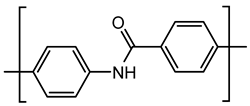 | >3 months at RT | Yes | [58] |
| Polyaniline | 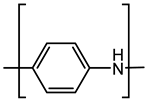 | Stable for at least a few weeks at RT | Yes | [125] |
| Polyimide V |  | Stable for at least a few days at RT | Yes | [126] |
| Polyimide VI | 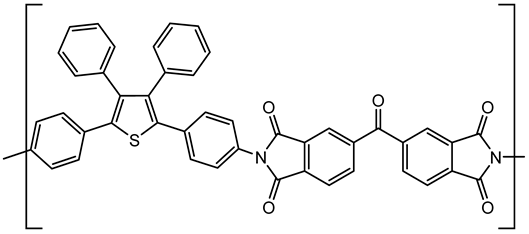 | Stable for at least a few days at RT | Yes | [126] |
| Polyimide VIII |  | Stable for at least a few days at RT | No | [126] |
| Polyimide IVa | 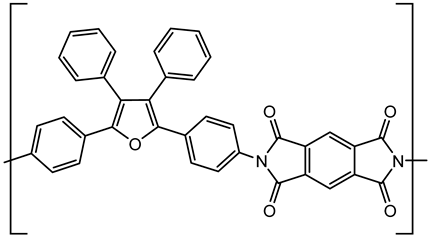 | Stable for at least a few days at RT | Yes | [127] |
| Polyethersulfones |  | A few weeks at RT in CSA (Sulfonated in oleum at 30 °C) | Yes | [128,129] |
| Poly(phthalazinones)poly(phthalazinone-ether ketone) (PPEK) | 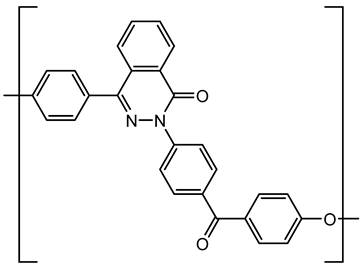 | >95 h at RT (sulfonated in oleum at 23 °C) | Yes | [130] |
| Poly(phthalazinone ether sulfone) (PPES) | 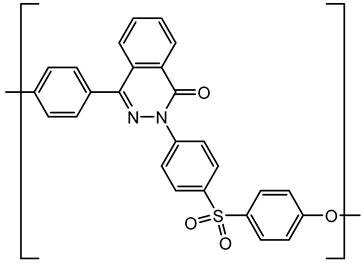 | Half-life to sulfonation ~50 h at 25 °C | Yes | [130] |
| Polyarylhydrazides |  | A few weeks at RT | Yes | [131] |
| Polyarylhydrazides |  | Rapidly hydrolyzed | N/A | [132] |
| Poly-Schiff’s bases | 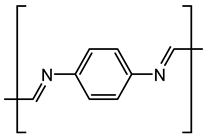 | A few weeks at RT | Slightly soluble | [133] |
| Poly-Schiff’s bases |  | A few weeks at RT | Yes | [133] |
| Silicon polyamide |  | Stable (gave red solutions, suggesting ring protonation, i.e., long-term liability to reaction) | Yes | [134] |
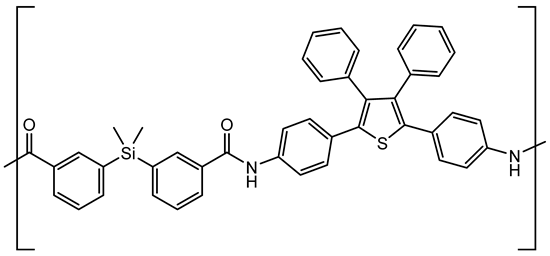 | Stable (gave red solutions, suggesting ring protonation, i.e., long-term liability to reaction) | Yes | [134] | |
| Nylon 6 (e-caprolactam polymer)(also Nylon 2, 12) |  | At least a few days at RT (viscosity is measured in 96% H2SO4) | Yes | [56,57] |
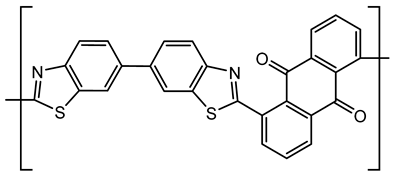 | At least a few days at RT | Yes | [59] | |
 | At least a few days at RT | No | [59] | |
| Quinoxaline ladder polymers | 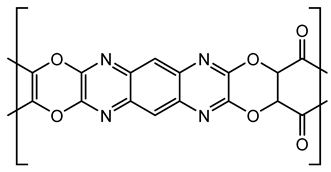 | At least a few days at RT | No | [135] |
| Polyglycine |  | Limited hydrolysis on hour timescale in cold H2SO4 | N/A | [54,55] |
| PEEK |  | 50% sulfonated in 96.3% sulfuric acid at 22 °C after hours | Yes | [53] |
| Polystyrene |  | Fully sulfonated in minutes at 90 °C, 50% after 10 h at 70 °C, implies stable at RT. | Unknown | [136] |
| Polystyrene sulfonate |  | Stable for >100 h at 90 °C | Yes | [136] |
References
- Hoehler, T.; Bains, W.; Davila, A.; Parenteau, M.; Pohorille, A. Life’s requirements, habitability, and biological potential. Planet. Astrobiol. 2020, 13, 37. [Google Scholar]
- McKay, C.P. Requirements and limits for life in the context of exoplanets. Proc. Natl. Acad. Sci. USA 2014, 111, 12628–12633. [Google Scholar] [CrossRef]
- Seager, S. Exoplanet habitability. Science 2013, 340, 577–581. [Google Scholar] [CrossRef] [PubMed]
- Pohorille, A.; Pratt, L.R. Is Water the Universal Solvent for Life? Orig. Life Evol. Biosph. 2012, 42, 405–409. [Google Scholar] [CrossRef] [PubMed]
- Bains, W. Many chemistries could be used to build living systems. Astrobiology 2004, 4, 137–167. [Google Scholar] [CrossRef] [PubMed]
- McKay, C.; Smith, H. Possibilities for methanogenic life in liquid methane on the surface of Titan. Icarus 2005, 178, 274–276. [Google Scholar] [CrossRef]
- Norman, L.H. Is there life on… Titan? Astron. Geophys. 2011, 52, 1.39–31.42. [Google Scholar] [CrossRef]
- Budisa, N.; Schulze-Makuch, D. Supercritical carbon dioxide and its potential as a life-sustaining solvent in a planetary environment. Life 2014, 4, 331–340. [Google Scholar] [CrossRef] [PubMed]
- McLendon, C.; Opalko, F.J.; Illangkoon, H.I.; Benner, S.A. Solubility of polyethers in hydrocarbons at low temperatures. A model for potential genetic backbones on warm titans. Astrobiology 2015, 15, 200–206. [Google Scholar] [CrossRef]
- National Research Council. The Limits of Organic Life in Planetary Systems; The National Academy of Press: Washington, DC, USA, 2019. [Google Scholar]
- Greaves, J.S.; Richards, A.M.; Bains, W.; Rimmer, P.B.; Sagawa, H.; Clements, D.L.; Seager, S.; Petkowski, J.J.; Sousa-Silva, C.; Ranjan, S. Phosphine gas in the cloud decks of Venus. Nat. Astron. 2020, 11, 1–10. [Google Scholar] [CrossRef]
- Cockell, C.S. Life on Venus. Planet. Space Sci. 1999, 47, 1487–1501. [Google Scholar] [CrossRef]
- Grinspoon, D.H. Venus Revealed: A New Look below the Clouds of Our Mysterious Twin Planet; Basic Books: New York, NY, USA, 1997. [Google Scholar]
- Grinspoon, D.H.; Bullock, M.A. Astrobiology and Venus exploration. Geophys. Monogr. Am. Geophys. Union 2007, 176, 191. [Google Scholar]
- Morowitz, H.; Sagan, C. Life in the Clouds of Venus? Nature 1967, 215, 1259. [Google Scholar] [CrossRef]
- Schulze-Makuch, D.; Grinspoon, D.H.; Abbas, O.; Irwin, L.N.; Bullock, M.A. A sulfur-based survival strategy for putative phototrophic life in the Venusian atmosphere. Astrobiology 2004, 4, 11–18. [Google Scholar] [CrossRef]
- Schulze-Makuch, D.; Irwin, L.N. Reassessing the possibility of life on Venus: Proposal for an astrobiology mission. Astrobiology 2002, 2, 197–202. [Google Scholar] [CrossRef] [PubMed]
- Schulze-Makuch, D.; Irwin, L.N. The prospect of alien life in exotic forms on other worlds. Naturwissenschaften 2006, 93, 155–172. [Google Scholar] [CrossRef]
- Titov, D.V.; Ignatiev, N.I.; McGouldrick, K.; Wilquet, V.; Wilson, C.F. Clouds and Hazes of Venus. Space Sci. Rev. 2018, 214, 126. [Google Scholar] [CrossRef]
- Oschlisniok, J.; Häusler, B.; Pätzold, M.; Tyler, G.L.; Bird, M.K.; Tellmann, S.; Remus, S.; Andert, T. Microwave absorptivity by sulfuric acid in the Venus atmosphere: First results from the Venus Express Radio Science experiment VeRa. Icarus 2012, 221, 940–948. [Google Scholar] [CrossRef]
- Ballesteros, F.; Fernandez-Soto, A.; Martínez, V. Diving into Exoplanets: Are Water Seas the Most Common? Astrobiology 2019, 19, 642–654. [Google Scholar] [CrossRef]
- Dartnell, L.R.; Nordheim, T.A.; Patel, M.R.; Mason, J.P.; Coates, A.J.; Jones, G.H. Constraints on a potential aerial biosphere on Venus: I. Cosmic rays. Icarus 2015, 257, 396–405. [Google Scholar] [CrossRef]
- Bains, W.; Petkowski, J.J.; Seager, S.; Ranjan, S.; Sousa-Silva, C.; Rimmer, P.B.; Zhan, Z.; Greaves, J.S.; Richards, A. Phosphine on Venus Cannot be Explained by Conventional Processes. arXiv 2020, arXiv:2009.06499. [Google Scholar]
- Liler, M. Reaction Mechanisms in Sulphuric Acid and Other Strong Acid Solutions; Academic Press: London, UK, 1971. [Google Scholar]
- Rosenbaum, J.; Symons, M. Unstable intermediates: Part X. Aliphatic carbonium ions. Mol. Phys. 1960, 3, 205–217. [Google Scholar] [CrossRef]
- Zhao, J.; Levitt, N.P.; Zhang, R. Heterogeneous chemistry of octanal and 2,4-hexadienal with sulfuric acid. Geophys. Res. Lett. 2005, 32, 388. [Google Scholar] [CrossRef]
- Connelly, B.M.; Tolbert, M.A. Reaction of Isoprene on Thin Sulfuric Acid Films: Kinetics, Uptake, and Product Analysis. Environ. Sci. Technol. 2010, 44, 4603–4608. [Google Scholar] [CrossRef] [PubMed]
- Liggio, J.; Li, S.-M.; McLaren, R. Heterogeneous Reactions of Glyoxal on Particulate Matter: Identification of Acetals and Sulfate Esters. Environ. Sci. Technol. 2005, 39, 1532–1541. [Google Scholar] [CrossRef] [PubMed]
- Carr, N.G. The occurrence of poly-β-hydroxybutyrate in the blue-green alga, Chlorogloea fritschii. Biochim. Biophys. Acta Biophys. Incl. Photosynth. 1966, 120, 308–310. [Google Scholar] [CrossRef]
- Prescott, W.G.; Smiles, S. LXXII. The interaction of aromatic disulphides and sulphuric acid. J. Chem. Soc. Trans. 1911, 99, 640–649. [Google Scholar] [CrossRef]
- Torn, R.D.; Nathanson, G.M. Surface tensions and surface segregation of n-butanol in sulfuric acid. J. Phys. Chem. B 2002, 106, 8064–8069. [Google Scholar] [CrossRef]
- Garland, R.M.; Elrod, M.J.; Kincaid, K.; Beaver, M.R.; Jimenez, J.L.; Tolbert, M.A. Acid-catalyzed reactions of hexanal on sulfuric acid particles: Identification of reaction products. Atmos. Environ. 2006, 40, 6863–6878. [Google Scholar] [CrossRef]
- Kane, S.M.; Leu, M.-T. Uptake of methanol vapor in sulfuric acid solutions. J. Phys. Chem. A 2001, 105, 1411–1415. [Google Scholar] [CrossRef]
- Iraci, L.T.; Essin, A.M.; Golden, D.M. Solubility of methanol in low-temperature aqueous sulfuric acid and implications for atmospheric particle composition. J. Phys. Chem. A 2002, 106, 4054–4060. [Google Scholar] [CrossRef]
- Imre, D.G.; Xu, J.; Tridico, A.C. Phase transformations in sulfuric acid aerosols: Implications for stratospheric ozone depletion. Geophys. Res. Lett. 1997, 24, 69–72. [Google Scholar] [CrossRef]
- Clapp, M.; Niedziela, R.; Richwine, L.; Dransfield, T.; Miller, R.; Worsnop, D. Infrared spectroscopy of sulfuric acid/water aerosols: Freezing characteristics. J. Geophys. Res. Atmos. 1997, 102, 8899–8907. [Google Scholar] [CrossRef]
- Yin, S.; Ge, M.; Wang, W.; Liu, Z.; Wang, D. Uptake of gas-phase alkylamines by sulfuric acid. Chin. Sci. Bull. 2011, 56, 1241. [Google Scholar] [CrossRef]
- Wang, L.; Lal, V.; Khalizov, A.F.; Zhang, R. Heterogeneous chemistry of alkylamines with sulfuric acid: Implications for atmospheric formation of alkylaminium sulfates. Environ. Sci. Technol. 2010, 44, 2461–2465. [Google Scholar] [CrossRef] [PubMed]
- Elm, J.; Jen, C.N.; Kurtén, T.; Vehkamäki, H. Strong Hydrogen Bonded Molecular Interactions between Atmospheric Diamines and Sulfuric Acid. J. Phys. Chem. A 2016, 120, 3693–3700. [Google Scholar] [CrossRef] [PubMed]
- Den Hertog, H.J.; van der Plas, H.C.; Buurman, D.J. The reactivity of pyridine towards sulphuric acid at elevated temperatures. Recl. Trav. Chim. Pays Bas 1958, 77, 963–971. [Google Scholar] [CrossRef]
- McElvain, S.M.; Goese, M.A. The Sulfonation of Pyridine and the Picolines. J. Am. Chem. Soc. 1943, 65, 2233–2236. [Google Scholar] [CrossRef]
- Van Ammers, M.; den Hertog, H.J. On the sulphonation of pyridine-N-oxide. Recl. Trav. Chim. Pays Bas 1959, 78, 586–588. [Google Scholar] [CrossRef]
- Handa, T. On the Color-reactions of the Condensed Polycyclic Aromatic Hydrocarbons and their Related Quinones in the Solutions of the Concentrated Sulfuric Acid. Bull. Chem. Soc. Jpn. 1955, 28, 483–489. [Google Scholar] [CrossRef]
- Whalley, W.B. 699. Organic fluoro-compounds. Part VII. Some 2-trihalogenocoumarones. J. Chem. Soc. 1953, 95, 3479–3483. [Google Scholar] [CrossRef]
- Aalbersberg, W.I.; Hoijtink, G.J.; Mackor, E.L.; Weijland, W.P. 611. The formation of hydrocarbon positive ions in strong proton donors. J. Chem. Soc. 1959, 95, 3049–3054. [Google Scholar] [CrossRef]
- Kon, H.; Blois, M., Jr. Paramagnetism of Hydrocarbon—Conc. H2SO4 Systems. J. Chem. Phys. 1958, 28, 743–744. [Google Scholar] [CrossRef]
- Gold, V.; Tye, F. 403. The basicity of hydrocarbons. Part II. Ultra-violet absorption spectra of conjugated hydrocarbons in sulphuric acid solution. J. Chem. Soc. 1952, 3, 2172–2180. [Google Scholar] [CrossRef]
- Chambers, R.D.; Hole, M.; Iddon, B.; Musgrave, W.K.R.; Storey, R.A. Polyfluoroheterocyclic compounds. Part VII. Heptafluoro-quinoline and -isoquinoline. J. Chem. Soc. C Org. 1966, 39, 2328–2331. [Google Scholar] [CrossRef]
- US Bureau of Mines. Methods for Testing Petroleumproducts. A Handbook for Inspecting Laboratories; Department of the Interior: Washington, DC, USA, 1922.
- Holden, H.S.; Simpson, K. The Acid-Bath Murder(s): Rex v. John George Haigh. Police J. 1950, 23, 190–202. [Google Scholar] [CrossRef]
- Chan, L.P.; Chan, C.K. Enhanced Reactive Uptake of Nonanal by Acidic Aerosols in the Presence of Particle-Phase Organics. Aerosol Sci. Technol. 2011, 45, 872–883. [Google Scholar] [CrossRef]
- Shibuya, N.; Porter, R.S. Kinetics of PEEK sulfonation in concentrated sulfuric acid. Macromolecules 1992, 25, 6495–6499. [Google Scholar] [CrossRef]
- Huang, R.Y.M.; Shao, P.; Burns, C.M.; Feng, X. Sulfonation of poly(ether ether ketone)(PEEK): Kinetic study and characterization. J. Appl. Polym. Sci. 2001, 82, 2651–2660. [Google Scholar] [CrossRef]
- Reitz, H.C.; Ferrel, R.E.; Fraenkel-Conrat, H.; Olcott, H.S. Action of Sulfating Agents on Proteins and Model Substances. I. Concentrated Sulfuric Acid. J. Am. Chem. Soc. 1946, 68, 1024–1031. [Google Scholar] [CrossRef] [PubMed]
- Ferrel, R.E.; Olcott, H.S.; Fraenkel-Conrat, H. Phosphorylation of Proteins with Phosphoric Acid Containing Excess Phosphorus Pentoxide. J. Am. Chem. Soc. 1948, 70, 2101–2107. [Google Scholar] [CrossRef]
- Kricheldorf, H.R.; Schilling, G. 15N NMR spectroscopy, 8 13C and 15N NMR investigation on cis and trans amide groups in polyamides and lactams. Makromol. Chem. 1978, 179, 2667–2674. [Google Scholar] [CrossRef]
- Wichterle, O.; Králíček, J. The anionic polymerization of caprolactam. In Fortschritte Der Hochpolymeren—Forschung; Springer: Berlin/Heidelberg, Germany, 1961; pp. 578–595. [Google Scholar]
- Morgan, R.J.; Butler, N.L. Hydrolytic degradation mechanism of Kevlar 49 fibers when dissolved in sulfuric acid. Polym. Bull. 1992, 27, 689–696. [Google Scholar] [CrossRef]
- Kokelenberg, H.; Marvel, C.S. Polymers containing anthraquinone units: Benzimidazole and benzothiazole polymers. J. Polym. Sci. Part A 1 Polym. Chem. 1970, 8, 3199–3209. [Google Scholar] [CrossRef]
- Wiley, R.H.; Venkatachalam, T. Sulfonation of polystyrene crosslinked with pure m-divinylbenzene. J. Polym. Sci. Part A 1 Polym. Chem. 1966, 4, 1892–1894. [Google Scholar] [CrossRef]
- Greenwood, N.N.; Thompson, A. Comparison of some properties of anhydrous sulphuric acid and dideuterosulphuric acid over a range of temperature. J. Chem. Soc. 1959, 9, 3474–3484. [Google Scholar] [CrossRef]
- Linstead, R. 212. Phthalocyanines. Part I. A new type of synthetic colouring matters. J. Chem. Soc. 1934, 7, 1016–1017. [Google Scholar] [CrossRef]
- Limaye, S.S.; Mogul, R.; Smith, D.J.; Ansari, A.H.; Slowik, G.; Vaishampayan, P. Venus’ Spectral Signatures and the Potential for Life in the Clouds. Astrobiology 2018, 18, 1181–1198. [Google Scholar] [CrossRef]
- Cerfontain, H. Mechanistic Aspects in Aromatic Sulfonation and Desulfonation; Interscience Publishers: New York, NY, USA, 1968. [Google Scholar]
- Gilbert, E.E. Sulfonation and Related Reactions; Interscience Publishers: Geneva, Swizerland, 1965. [Google Scholar]
- Cox, R.A.; Yates, K. Excess acidities. A generalized method for the determination of basicities in aqueous acid mixtures. J. Am. Chem. Soc. 1978, 100, 3861–3867. [Google Scholar] [CrossRef]
- Cox, R.A.; Yates, K. Kinetic equations for reactions in concentrated aqueous acids based on the concept of “ excess acidity”. Can. J. Chem. 1979, 57, 2944–2951. [Google Scholar] [CrossRef]
- Jorgenson, M.J.; Hartter, D.R. A Critical Re-evaluation of the Hammett Acidity Function at Moderate and High Acid Concentrations of Sulfuric Acid. New H0 Values Based Solely on a Set of Primary Aniline Indicators. J. Am. Chem. Soc. 1963, 85, 878–883. [Google Scholar] [CrossRef]
- Hammett, L.P. The Determination of the Proton-Attracting Properties of Liquids. J. Chem. Phys. 1940, 8, 644. [Google Scholar] [CrossRef]
- Bains, W.; Petkowski, J.J.; Seager, S. A Data Resource for Sulfuric Acid Reactivity of Organic Chemicals. Data 2021, 6, 24. [Google Scholar] [CrossRef]
- Sousa-Silva, C.; Petkowski, J.; Seager, S. ATMOS: Towards Resolving Ambiguities in the Spectroscopic Detection of Life. In Proceedings of the Workshop on Astrophysical Opacities; Michigan University: Kalamazoo, MI, USA, 2018; p. 241. [Google Scholar]
- Sousa-Silva, C.; Petkowski, J.J.; Seager, S. Molecular simulations for the spectroscopic detection of atmospheric gases. Phys. Chem. Chem. Phys. 2019, 21, 18970–18987. [Google Scholar] [CrossRef]
- Le Noble, W.J. Kinetics of reactions in solutions under pressure. In Progress in Physical Organic Chemistry; Streitwieser, A.J., Taft, R.W., Eds.; Interscience Publishers: New York, NY, USA, 1967; Volume 5, pp. 207–330. [Google Scholar]
- Le Noble, W.J.; Daka, M.R. Kinetics of reactions in solutions under pressure. 52. Effect of pressure on concerted and stepwise sigmatropic shifts. J. Am. Chem. Soc. 1978, 100, 5961–5962. [Google Scholar] [CrossRef]
- Gonikberg, M.G. Chemical Equilibria and Reaction Rates at High Pressures; Schmorak, J., Translator; National Science Foundation: Washington, DC, USA, 1960.
- Eckert, C.A. High pressure kinetics in solution. Annu. Rev. Phys. Chem. 1972, 23, 239–264. [Google Scholar] [CrossRef]
- Krasnopolsky, V.A. Chemical kinetic model for the lower atmosphere of Venus. Icarus 2007, 191, 25–37. [Google Scholar] [CrossRef]
- Krasnopolsky, V.A. A photochemical model for the Venus atmosphere at 47–112 km. Icarus 2012, 218, 230–246. [Google Scholar] [CrossRef]
- Palmer, K.F.; Williams, D. Optical Constants of Sulfuric Acid; Application to the Clouds of Venus? Appl. Opt. 1975, 14, 208–219. [Google Scholar] [CrossRef]
- Young, A.T. Are the clouds of Venus sulfuric acid? Icarus 1973, 18, 564–582. [Google Scholar] [CrossRef]
- Greenewalt, C.H. Partial Pressure of Water out of Aqueous Solutions of Sulfuric Acid. Ind. Eng. Chem. 1925, 17, 522–523. [Google Scholar] [CrossRef]
- Gaulton, A.; Hersey, A.; Nowotka, M.; Bento, A.P.; Chambers, J.; Mendez, D.; Mutowo, P.; Atkinson, F.; Bellis, L.J.; Cibrián-Uhalte, E. The ChEMBL database in 2017. Nucleic Acids Res. 2017, 45, D945–D954. [Google Scholar] [CrossRef]
- Kegley, S.; Hill, B.; Orme, S.; Choi, A. PAN Pesticide Database; Pesticide Action Network North America: Berkeley, CA, USA, 2000. [Google Scholar]
- Bains, W. Getting beyond the Toy Domain. Meditations on David Deamer’s “Assembling Life”; Multidisciplinary Digital Publishing Institute: Basel, Switzerland, 2020. [Google Scholar]
- Weininger, D. SMILES, a chemical language and information system. 1. Introduction to methodology and encoding rules. J. Chem. Inf. Comput. Sci. 1988, 28, 31–36. [Google Scholar] [CrossRef]
- Petkowski, J.J.; Bains, W.; Seager, S. An apparent binary choice in biochemistry: Mutual reactivity implies life chooses thiols or nitrogen-sulfur bonds, but not both. Astrobiology 2019, 19, 579–613. [Google Scholar] [CrossRef]
- Petkowski, J.J.; Bains, W.; Seager, S. On the Potential of Silicon as a Building Block for Life. Life 2020, 10, 84. [Google Scholar] [CrossRef] [PubMed]
- Landrum, G. RDKit: Cheminformatics and Machine Learning Software; Novartis Institutes for Biomedical Research: Basel, Switzerland, 2013. [Google Scholar]
- Wołos, A.; Roszak, R.; Żądło-Dobrowolska, A.; Beker, W.; Mikulak-Klucznik, B.; Spólnik, G.; Dygas, M.; Szymkuć, S.; Grzybowski, B.A. Synthetic connectivity, emergence, and self-regeneration in the network of prebiotic chemistry. Science 2020, 369, eaaw1955. [Google Scholar] [CrossRef] [PubMed]
- Oyama, V.I.; Carle, G.C.; Woeller, F.; Pollack, J.B.; Reynolds, R.T.; Craig, R.A. Pioneer Venus gas chromatography of the lower atmosphere of Venus. J. Geophys. Res. Space Phys. 1980, 85, 7891–7902. [Google Scholar] [CrossRef]
- Vinogradov, A.P.; Surkov, Y.A.; Andreichikov, B.M. Research in the composition of the atmosphere of Venus aboard automatic stations ‘Venera-5’ and ‘venera-6’. Sov. Phys. Dokl. 1970, 15, 4–6. [Google Scholar]
- Heinemeier, K.M.; Schjerling, P.; Heinemeier, J.; Møller, M.B.; Krogsgaard, M.R.; Grum-Schwensen, T.; Petersen, M.M.; Kjaer, M. Radiocarbon dating reveals minimal collagen turnover in both healthy and osteoarthritic human cartilage. Sci. Transl. Med. 2016, 8, 346ra390. [Google Scholar] [CrossRef]
- Basisty, N.; Holtz, A.; Schilling, B. Accumulation of “Old Proteins” and the Critical Need for MS-based Protein Turnover Measurements in Aging and Longevity. Proteomics 2020, 20, 1800403. [Google Scholar] [CrossRef]
- Petrov, A.D.; Chernyshev, E.A.; Bisku, M. Synthesis of organosilicon compounds containing carbonyl and carboxyl groups. Bull. Acad. Sci. USSR Div. Chem. Sci. 1956, 5, 1485–1487. [Google Scholar] [CrossRef]
- Bains, W.; Petkowski, J.J.; Sousa-Silva, C.; Seager, S. Trivalent phosphorus and phosphines as components of biochemistry in anoxic environments. Astrobiology 2019, 19, 885–902. [Google Scholar] [CrossRef] [PubMed]
- Petkowski, J.J.; Bains, W.; Seager, S. Natural products containing ‘rare’ organophosphorus functional groups. Molecules 2019, 24, 866. [Google Scholar] [CrossRef]
- Kipping, F.S.; Martin, G. LXII. The action of fuming sulphuric acid on triphenylsilicol. J. Chem. Soc. Trans. 1909, 95, 489–494. [Google Scholar] [CrossRef]
- Deans, F.; Eaborn, C. 455. Aromatic reactivity. Part III. Cleavage of substituted phenyltrimethylsilanes by sulphuric acid in acetic acid-water. J. Chem. Soc. 1959, 5, 2299–2303. [Google Scholar] [CrossRef]
- Cockell, C.S.; Balme, M.; Bridges, J.C.; Davila, A.; Schwenzer, S.P. Uninhabited habitats on Mars. Icarus 2012, 217, 184–193. [Google Scholar] [CrossRef]
- Long, F.A.; Paul, M.A. Application of the H0 Acidity Function to Kinetics and Mechanisms of Acid Catalysis. Chem. Rev. 1957, 57, 935–1010. [Google Scholar] [CrossRef]
- Cleaves, H.J.; Chalmers, J.H.; Lazcano, A.; Miller, S.L.; Bada, J.L. A Reassessment of Prebiotic Organic Synthesis in Neutral Planetary Atmospheres. Orig. Life Evol. Biosph. 2008, 38, 105–115. [Google Scholar] [CrossRef]
- Sheldrick, G.M. Nuclear Magnetic Resonance Studies of Inorganic Hydrides; University of Cambridge: Cambridge, UK, 1966. [Google Scholar]
- Sheldrick, G.M. N.m.r. study of the protonation of phosphine, hypophosphorous acid and orthophosphorous acid. Trans. Faraday Soc. 1967, 63, 1077–1082. [Google Scholar] [CrossRef]
- Weston, R.E., Jr.; Bigeleisen, J. Kinetics of the Exchange of Hydrogen between Phosphine and Water: A Kinetic Estimate of the Acid and Base Strengths of Phosphine1. J. Am. Chem. Soc. 1954, 76, 3074–3078. [Google Scholar] [CrossRef]
- Benner, S.A.; Ricardo, A.; Carrigan, M.A. Is there a common chemical model for life in the universe? Curr. Opin. Chem. Biol. 2004, 8, 672–689. [Google Scholar] [CrossRef]
- Benner, S.A. Understanding Nucleic Acids Using Synthetic Chemistry. Acc. Chem. Res. 2004, 37, 784–797. [Google Scholar] [CrossRef]
- Benner, S.A.; Hutter, D. Phosphates, DNA, and the search for nonterrean life: A second generation model for genetic molecules. Bioorganic Chem. 2002, 30, 62–80. [Google Scholar] [CrossRef] [PubMed]
- Brand, J.C.D.; Jarvie, A.W.P.; Horning, W.C. 776. Aromatic sulphonation. Part V. Kinetic isotope effects and mechanism. J. Chem. Soc. 1959, 9, 3844–3853. [Google Scholar] [CrossRef]
- Bernthsen, A. Studien in der Methylenblaugruppe. Justus Liebigs Ann. Chem. 1889, 251, 1–97. [Google Scholar] [CrossRef]
- Mogul, R.; Limaye, S.S.; Way, M.; Cordova, J.A. Venus’ Mass Spectra Show Signs of Disequilibria in the Middle Clouds. Geophys. Res. Lett. 2021, 9, 1327. [Google Scholar]
- Borisova, L.V.; Koroleva, M.V.; Dubrov, Y.N.; Chibisov, A.K. Spectrophotometric and ESR methods of rhenium determination based on one electron photoreduction of Re(VII). Microchim. Acta 1986, 88, 57–64. [Google Scholar] [CrossRef]
- Koroleva, M.V.; Borisova, L.V.; Chibisov, A.K. Photoreduction of rhenium(VII) in hydrochloric and sulfuric acids and their mixtures. Theor. Exp. Chem. 1986, 22, 278–283. [Google Scholar] [CrossRef]
- Maus, D.; Grandjean, A.; Jung, G. Toward Magic Photoacids: Proton Transfer in Concentrated Sulfuric Acid. J. Phys. Chem. A 2018, 122, 9025–9030. [Google Scholar] [CrossRef]
- Seager, S.; Petkowski, J.J.; Gao, P.; Bains, W.; Bryan, N.C.; Ranjan, S.; Greaves, J. The Venusian lower atmosphere haze as a depot for desiccated microbial life: A proposed life cycle for persistence of the Venusian aerial biosphere. Astrobiology 2020, 56, 9633. [Google Scholar] [CrossRef] [PubMed]
- Way, M.J.; Del Genio, A.D. Venusian Habitable Climate Scenarios: Modeling Venus Through Time and Applications to Slowly Rotating Venus-Like Exoplanets. J. Geophys. Res. Planets 2020, 125, e006276. [Google Scholar] [CrossRef]
- Abraham, M.H.; Platts, J.A. Hydrogen Bond Structural Group Constants. J. Org. Chem. 2001, 66, 3484–3491. [Google Scholar] [CrossRef] [PubMed]
- Abraham, M.H.; Smith, R.E.; Luchtefeld, R.; Boorem, A.J.; Luo, R.; Acree, W.E. Prediction of Solubility of Drugs and Other Compounds in Organic Solvents. J. Pharm. Sci. 2010, 99, 1500–1515. [Google Scholar] [CrossRef]
- Rabbani, N.; Thornalley, P.J. Glycation Research in Amino Acids: A Place to Call Home; Springer: Berlin/Heidelberg, Germany, 2012. [Google Scholar]
- Singh, R.; Barden, A.; Mori, T.; Beilin, L. Advanced glycation end-products: A review. Diabetologia 2001, 44, 129–146. [Google Scholar] [CrossRef]
- Shivanna, K.R. Pollen Biology and Biotechnology; CRC Press: Boca Raton, TX, USA, 2002. [Google Scholar]
- Faegri, K.; Iversen, J. Textbook of Pollen Analysis; Wiley: Chichester, UK, 1989. [Google Scholar]
- Moore, P.D.; Webb, J.A.; Collinson, M.E. Pollen Analysis, 2nd ed.; Blackwells: Oxford, UK, 1991. [Google Scholar]
- Zhang, G.; Yuan, S.-s.; Li, Z.-m.; Long, S.-r.; Yang, J. Poly (arylene ether sulfone) containing thioether units: Synthesis, oxidation and properties. RSC Adv. 2014, 4, 23191–23201. [Google Scholar] [CrossRef]
- Gordon, C.G.; Main, B.R. The action of concentrated sulphuric acid on polyethylene and polypropylene: Part 1—Evolution of sulphur dioxide and carbon dioxide. Polym. Degrad. Stab. 1983, 5, 215–225. [Google Scholar] [CrossRef]
- Andreatta, A.; Cao, Y.; Chiang, J.C.; Heeger, A.J.; Smith, P. Electrically-conductive fibers of polyaniline spun from solutions in concentrated sulfuric acid. Synth. Met. 1988, 26, 383–389. [Google Scholar] [CrossRef]
- Imai, Y.; Maldar, N.N.; Kakimoto, M.-A. Synthesis and characterization of soluble polymides from 2,5-bis(4-aminophenyl)-3,4-diphenylthiophene and aromatic tetracarboxylic dianhydrides. J. Polym. Sci. Polym. Chem. Ed. 1984, 22, 2189–2196. [Google Scholar] [CrossRef]
- Jeong, H.-J.; Oishi, Y.; Kakimoto, M.-A.; Imai, Y. Synthesis and characterization of new soluble aromatic polyimides from 3,4-bis (4-aminophenyl)-2,5-diphenylfuran and aromatic tetracarboxylic dianhydrides. J. Polym. Sci. Part A Polym. Chem. 1991, 29, 39–43. [Google Scholar] [CrossRef]
- Lu, D.; Zou, H.; Guan, R.; Dai, H.; Lu, L. Sulfonation of Polyethersulfone by Chlorosulfonic Acid. Polym. Bull. 2005, 54, 21–28. [Google Scholar] [CrossRef]
- Sluma, H.-D.; Huff, D. Method for Sulfonating Aromatic Polyether Sulfones; Google Patents: California, CA, USA, 1991. [Google Scholar]
- Gao, Y.; Robertson, G.P.; Guiver, M.D.; Jian, X.; Mikhailenko, S.D.; Wang, K.; Kaliaguine, S. Sulfonation of poly(phthalazinones) with fuming sulfuric acid mixtures for proton exchange membrane materials. J. Membr. Sci. 2003, 227, 39–50. [Google Scholar] [CrossRef]
- Iwakura, Y.; Uno, K.; Hara, S.; Kurosawa, S. Polyhydrazides. I. N-alkylated polyhydrazides from diesters and hydrazine. J. Polym. Sci. Part A Polym. Chem. 1968, 6, 3357–3370. [Google Scholar] [CrossRef]
- Morgan, P.W. Liquid-crystalline solutions of polyhydrazides and poly(amide-hydrazides) in sulfuric acids. J. Polym. Sci. Polym. Symp. 1978, 65, 1–11. [Google Scholar] [CrossRef]
- Li, X.; Li, C.; Li, S. Synthesis, characterization and electrical properties of soluble conjugated poly-Schiff bases. Synth. Met. 1993, 60, 285–288. [Google Scholar] [CrossRef]
- Mohite, S.S.; Maldar, N.N.; Marvel, C.S. Synthesis and characterization of silicon-containing phenylated soluble aramids. J. Polym. Sci. Part A Polym. Chem. 1988, 26, 2777–2784. [Google Scholar] [CrossRef]
- Wolf, R.; Marvel, C.S. Polymers with quinoxaline units. V. Polymers with quinoxaline and dioxin units. J. Polym. Sci. Part A-1 Polym. Chem. 1969, 7, 2481–2491. [Google Scholar] [CrossRef]
- Coughlin, J.E.; Reisch, A.; Markarian, M.Z.; Schlenoff, J.B. Sulfonation of polystyrene: Toward the “ideal” polyelectrolyte. J. Polym. Sci. Part A Polym. Chem. 2013, 51, 2416–2424. [Google Scholar] [CrossRef]
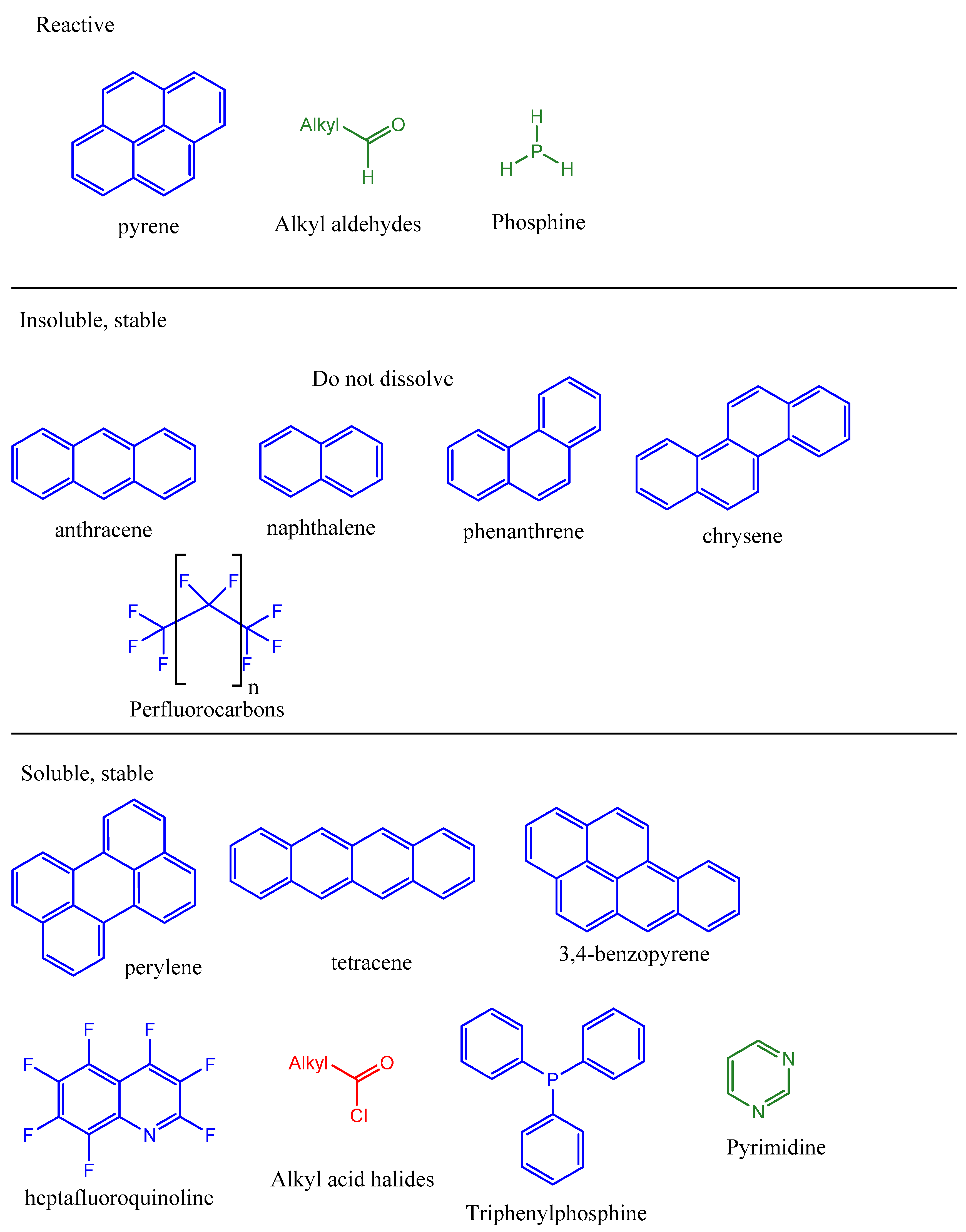
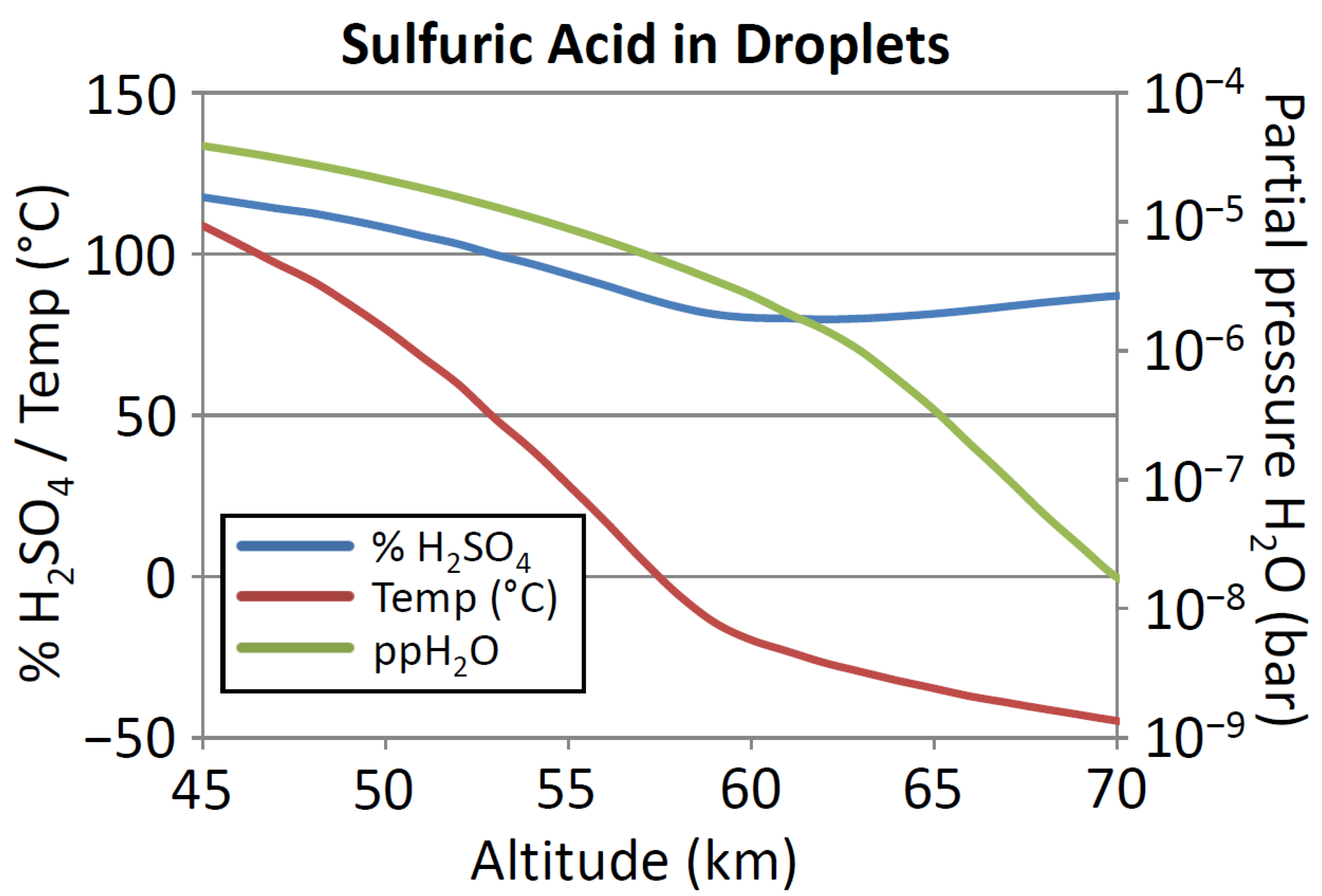
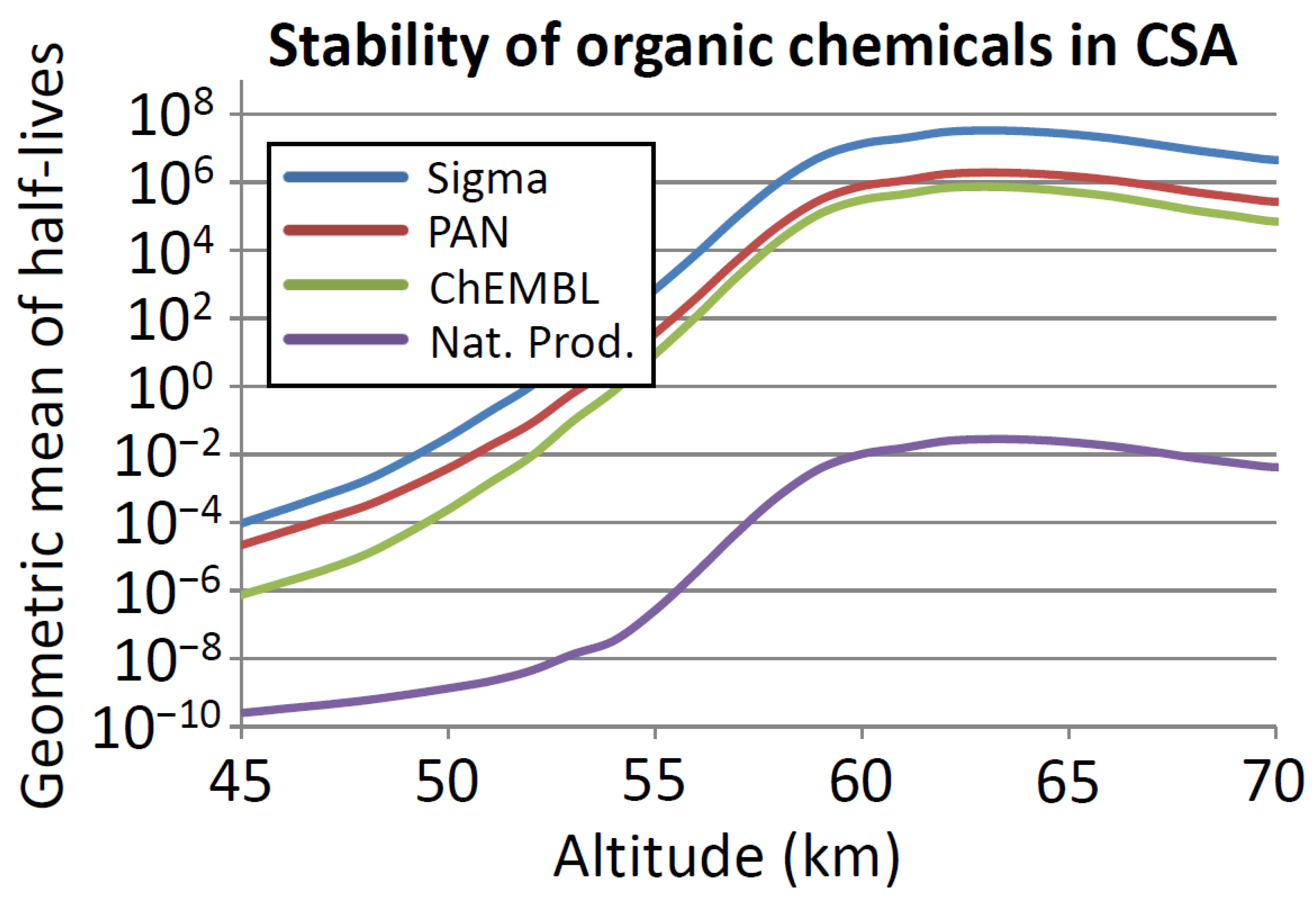
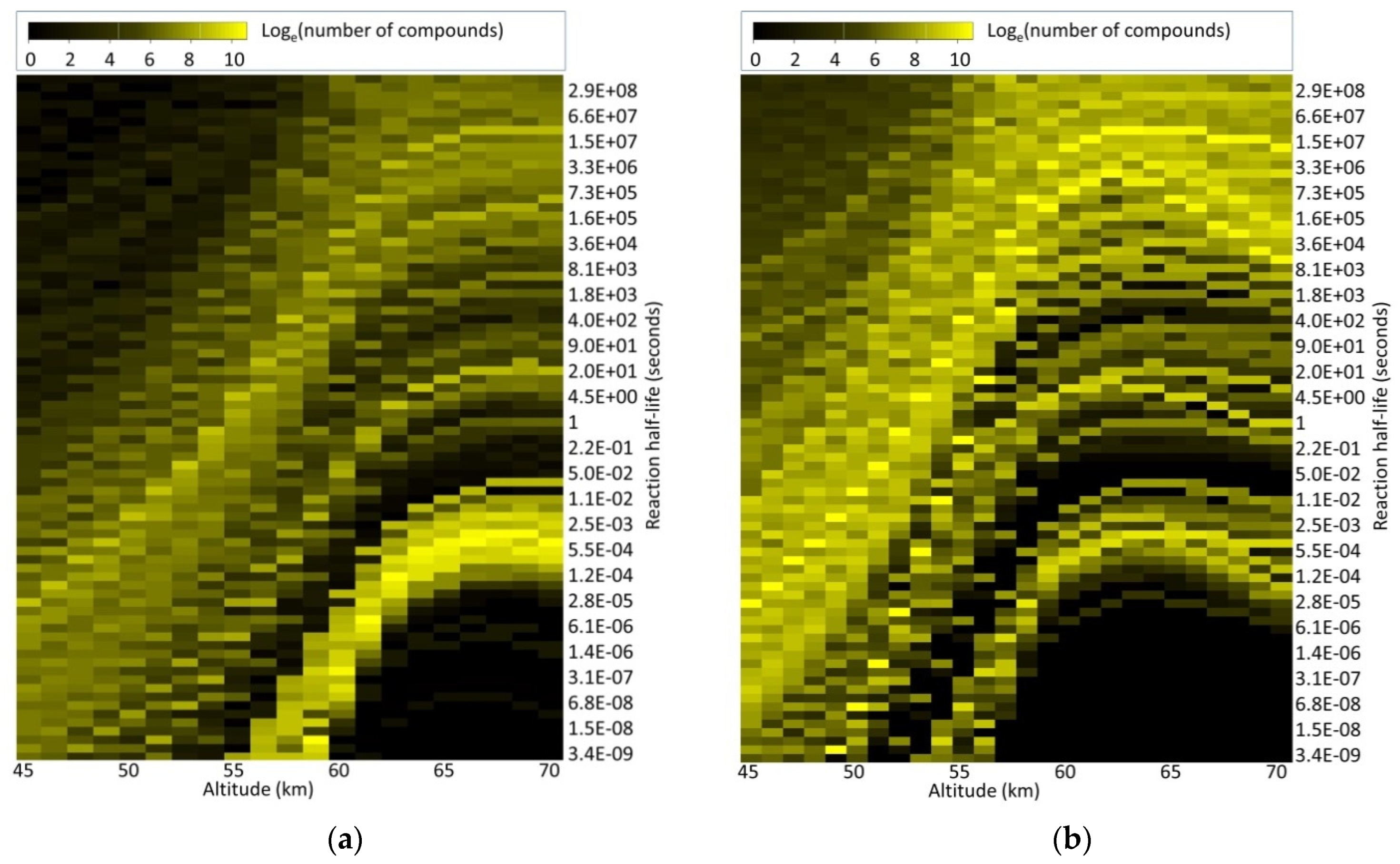
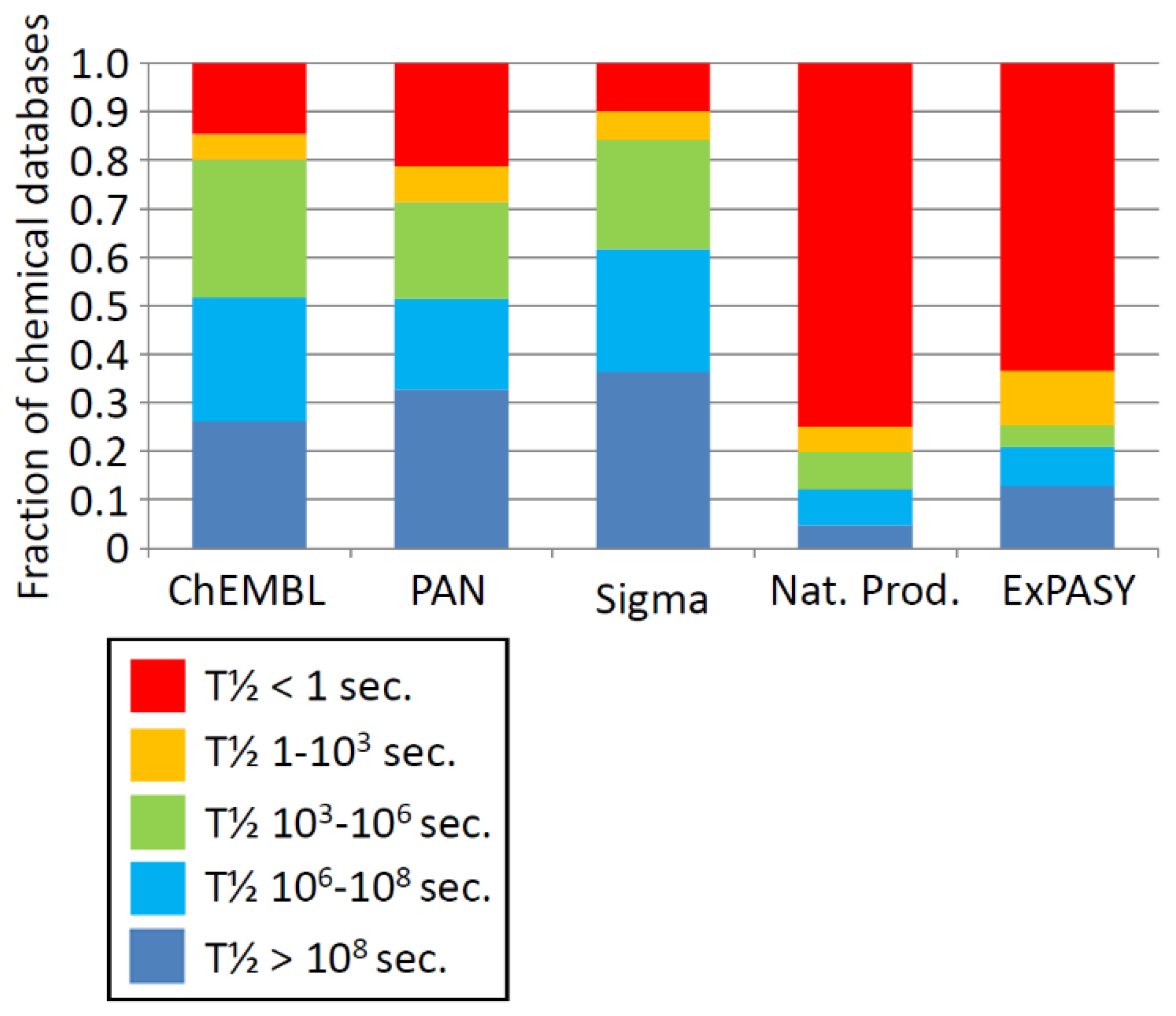
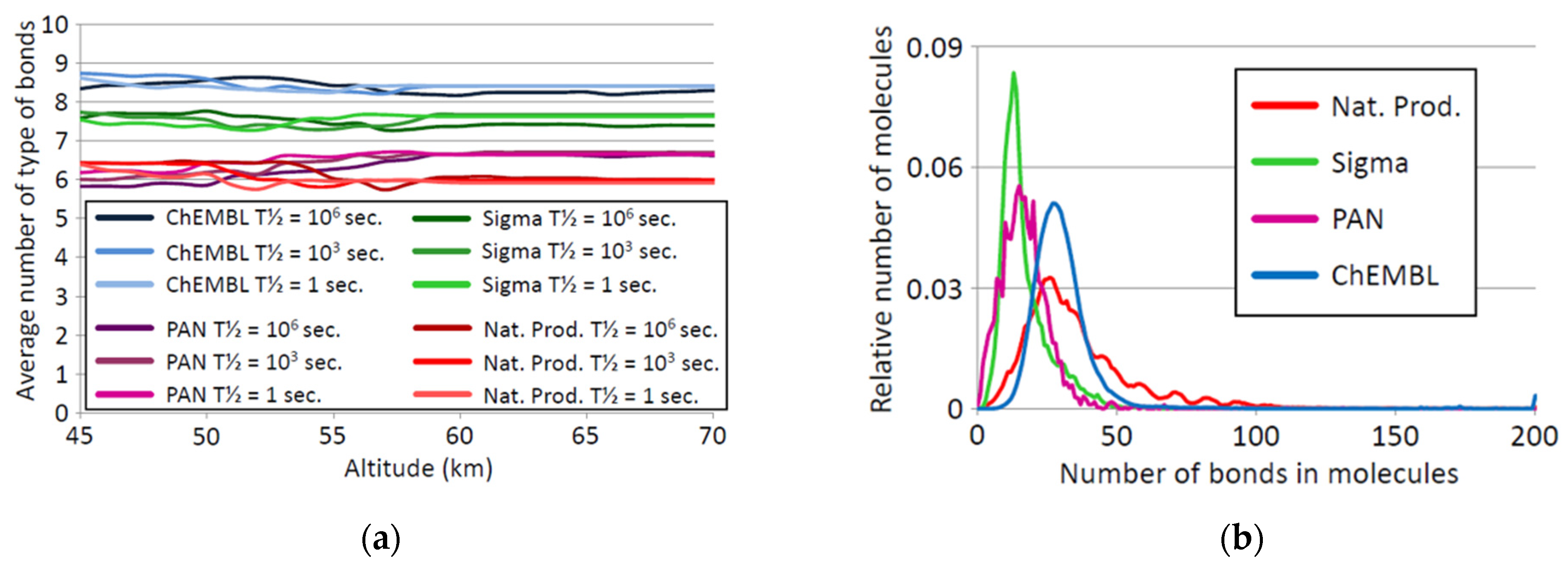
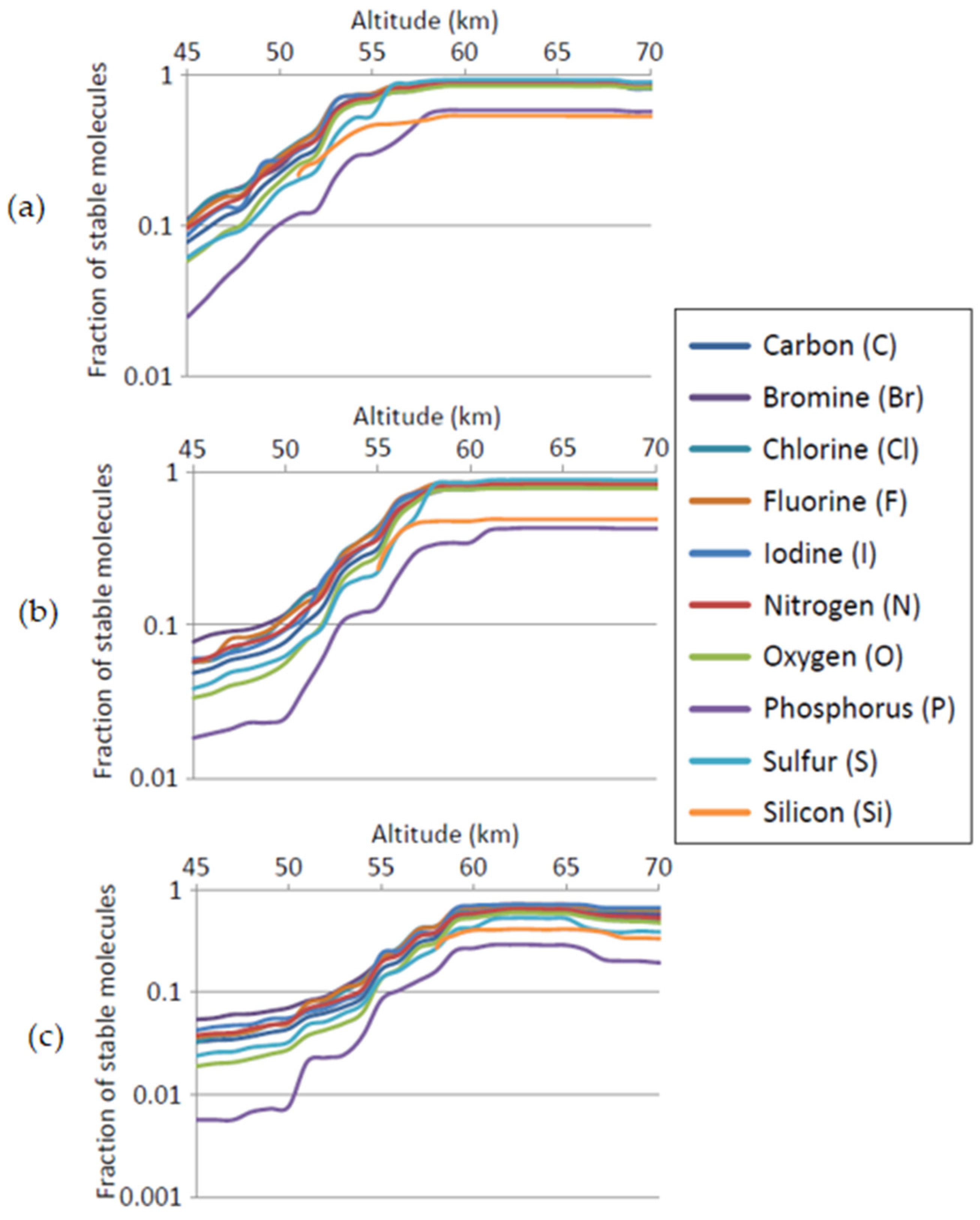
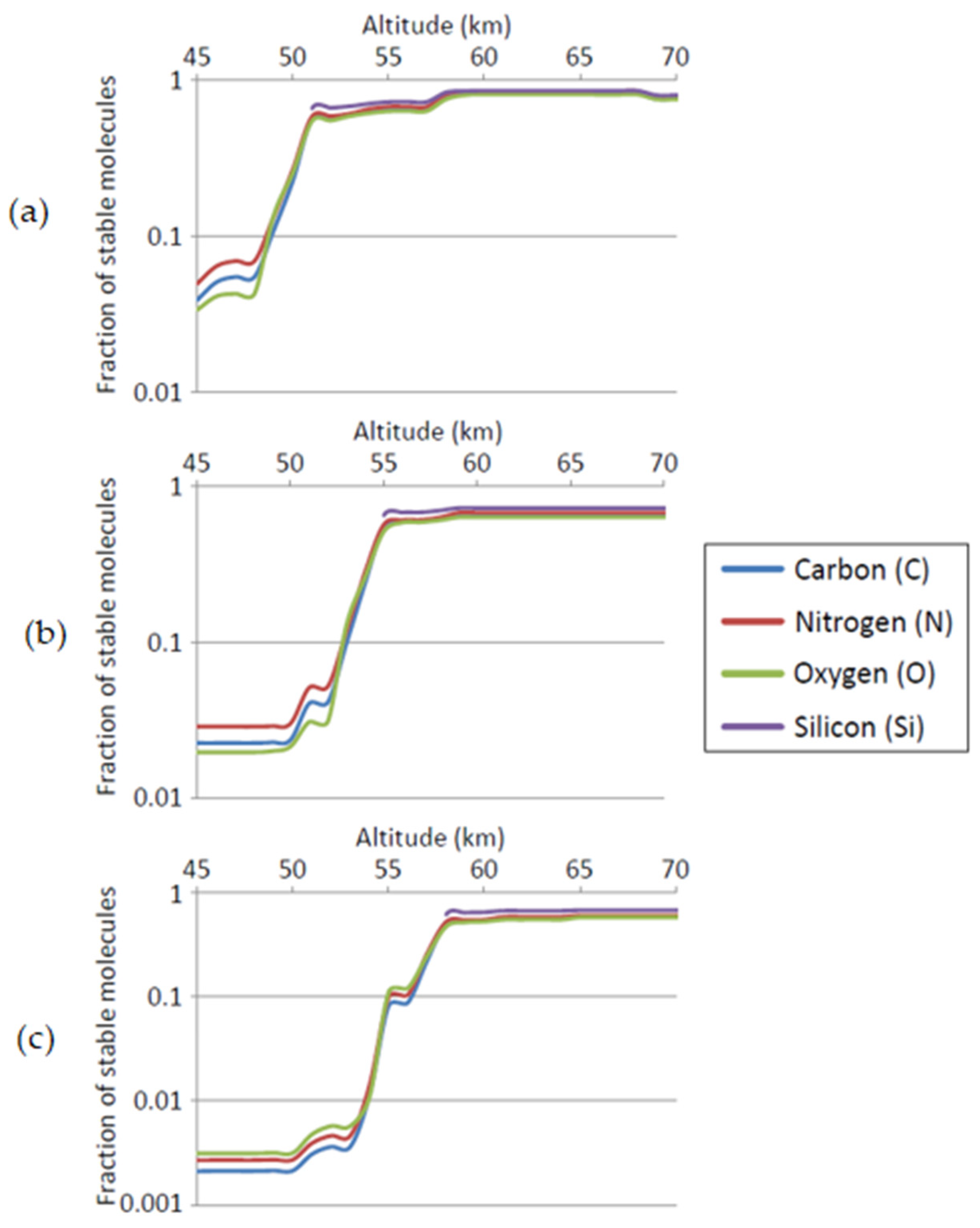
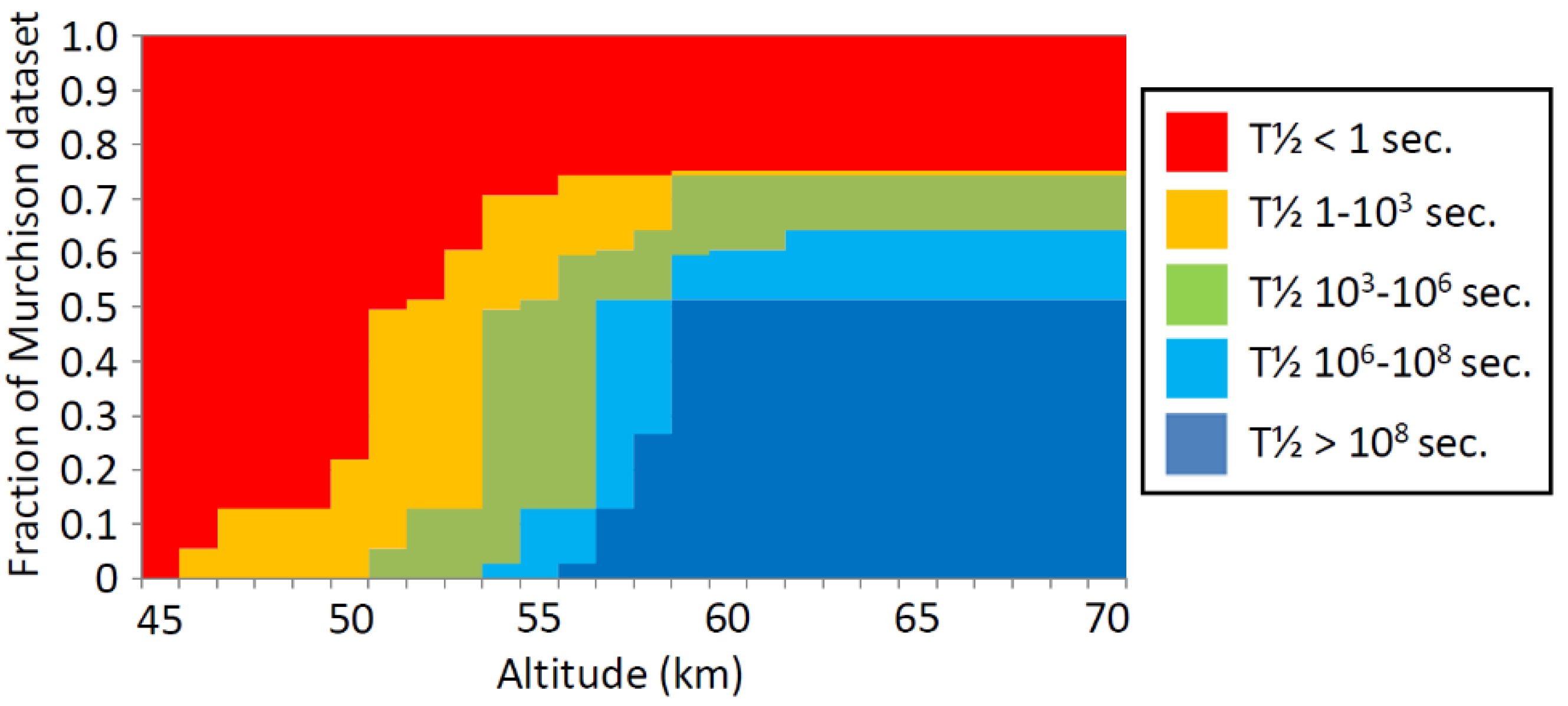

| Database | Number of Compounds | Web Address | Ref. |
|---|---|---|---|
| ChEMBL | 422,330 | https://www.ebi.ac.uk/chembl/ (accessed on 18 July 2020) | [82] |
| Natural Products (NPs) | 204,142 | See Table legend for sources | [86] |
| SigmaAldrich catalogue | 46,410 | https://www.sigmaaldrich.com/ (accessed on 18 July 2020) | N/A |
| PAN | 2866 | https://pesticideinfo.org/ (accessed on 18 July 2020) | [83] |
Publisher’s Note: MDPI stays neutral with regard to jurisdictional claims in published maps and institutional affiliations. |
© 2021 by the authors. Licensee MDPI, Basel, Switzerland. This article is an open access article distributed under the terms and conditions of the Creative Commons Attribution (CC BY) license (https://creativecommons.org/licenses/by/4.0/).
Share and Cite
Bains, W.; Petkowski, J.J.; Zhan, Z.; Seager, S. Evaluating Alternatives to Water as Solvents for Life: The Example of Sulfuric Acid. Life 2021, 11, 400. https://doi.org/10.3390/life11050400
Bains W, Petkowski JJ, Zhan Z, Seager S. Evaluating Alternatives to Water as Solvents for Life: The Example of Sulfuric Acid. Life. 2021; 11(5):400. https://doi.org/10.3390/life11050400
Chicago/Turabian StyleBains, William, Janusz Jurand Petkowski, Zhuchang Zhan, and Sara Seager. 2021. "Evaluating Alternatives to Water as Solvents for Life: The Example of Sulfuric Acid" Life 11, no. 5: 400. https://doi.org/10.3390/life11050400
APA StyleBains, W., Petkowski, J. J., Zhan, Z., & Seager, S. (2021). Evaluating Alternatives to Water as Solvents for Life: The Example of Sulfuric Acid. Life, 11(5), 400. https://doi.org/10.3390/life11050400








